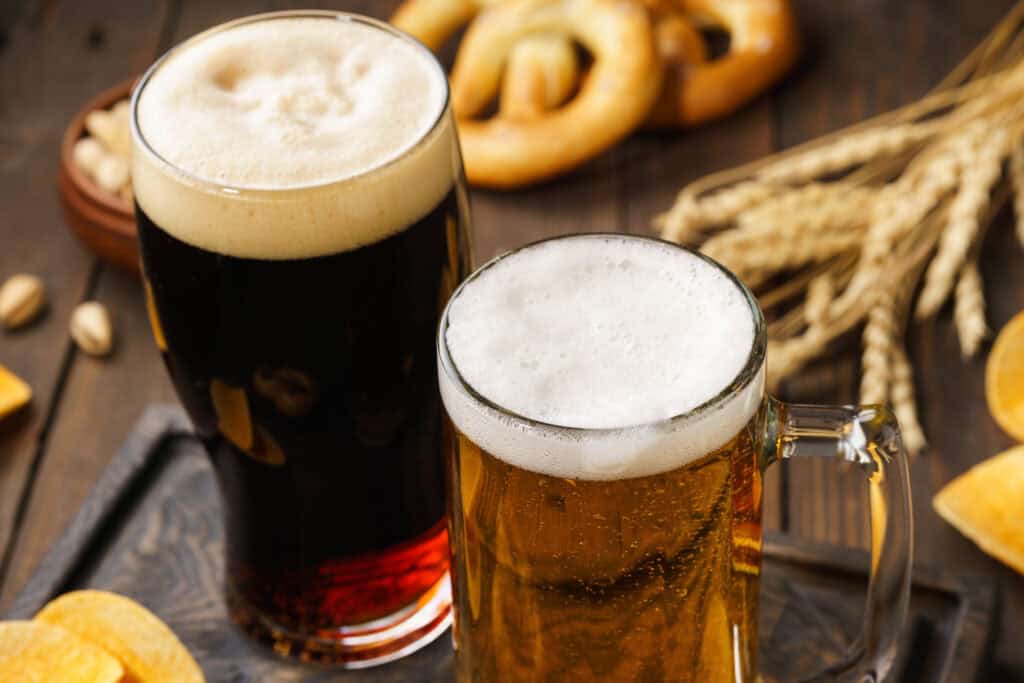What’s Old is New: Craft Lager Has Seen a Resurgence
Lager beers have seen a resurgence in popularity in the last few years. While beer drinkers are still reaching for IPAs, they are also increasingly looking for lighter, sessionable products. Lagers are a versatile family of styles and can cater to a diverse range of customers and palates. Ranging from light to full-bodied, golden to dark, the craft lager is fast becoming the preferred beer of many consumers.
Lager’s crisp, clean taste and refreshing qualities have made it a go to beer for any occasion, from a night out to a summer barbecue. What really sets lager apart from other styles comes down to brewing methods, process control, and a little bit of patience.
The main things to consider when brewing lager are ingredients, brewing conditions, and the fermentation process.
Ingredients
While it is common to think that a lager mash bill is simple and may only be 1 or 2 types of malt, this is not always the case. As lagers grow in popularity, so do the ingredients and options the brewer has to craft a unique product. Smoked malts, adjuncts like rice, or corn, even various yeast strains can all contribute to a clean, refreshing, unique product for the customer.
Brewing
How you brew your lager is always up for debate. As the age-old brewing adage goes “It depends”. Do you do a decoction mash? What about just a single infusion, or the standard step mash in a conversion vessel? This discourse will likely continue as long as the style persists, suffice to say, the brewing method is up to the brewer and experimentation is never a bad thing.
Brewing Chemistry
Carlsberg Research Laboratory was established in order to introduce scientific methods to the artisanal practice of brewing. Its founder, J.C. Jacobson, wanted to industrialize beer-making and reasoned that having a deeper understanding of the science behind the processes would ease this transition. From this lab came the first pure isolated brewer’s yeast, as well as the pH scale which we use to this day. S.P.L. Sørensen was researching the effect of ions on yeast proteins and those excitable little hydrogen ions were having a surprisingly large impact. He developed the pH scale to measure the quantity of hydrogen ions in water, reduced to a number that humans can grasp. By using the negative decimal logarithm, he made a directly proportional scale where adding millions of hydrogen ions would only decrease the pH by a few points on the scale.
Fermentation and Conditioning
This is where the real magic, or science, happens for lager beer. Careful control of temperature, yeast management and conditioning time will all be factors in the final product. While you can make lagers in under 100 hours, there is something to be said for cold and slow. Fermentation and conditioning management are key. Lagers do not hide off-flavors well, so even small variations in control can lead to large flavor impacts in the final product. Ensuring your yeast is clean and happy and your tank temperature is well controlled will yield great results and happy customers.
Lager is a classic family of beer styles that can lend itself to a lot of creativity while also providing the customer with a lighter, drinkable product. Keeping your brewing and fermentation variables in check will ensure a desirable product that your customers will love. Tastes will always change, and brewers need to stay ahead of these trends, but lager in all its various styles, will be here to stay.
-Matt Brower, PFI Customer Success Manager


